 The Hungarian Matyó ethnic group is among the few local communities who managed to preserve and treasure its ancient-old heritage, including traditional embroidery and other clothing crafts (as well as household crafts: pottery, doll making, ornamental furniture painting, and honey gingerbread making). The Matyó embroidery is famous not only in Hungary but far outside its borders. Its designs are really rich in color and texture and require profuse imagination and skill. This ornamentation is so time-consuming that it takes months and even years to make the whole set of Matyó folk clothing.
The Hungarian Matyó ethnic group is among the few local communities who managed to preserve and treasure its ancient-old heritage, including traditional embroidery and other clothing crafts (as well as household crafts: pottery, doll making, ornamental furniture painting, and honey gingerbread making). The Matyó embroidery is famous not only in Hungary but far outside its borders. Its designs are really rich in color and texture and require profuse imagination and skill. This ornamentation is so time-consuming that it takes months and even years to make the whole set of Matyó folk clothing.
The culturally distinct Matyó ethnic group lives in the town of Mezőkövesd (North-Eastern Hungary) and the surrounding villages. As in the past, Mezőkövesd continues to take a leading role in safeguarding and promoting cultural identity. Catholics among the primarily Protestant inhabitants of the area, with a rich characteristic traditional heritage and elaborate costumes.
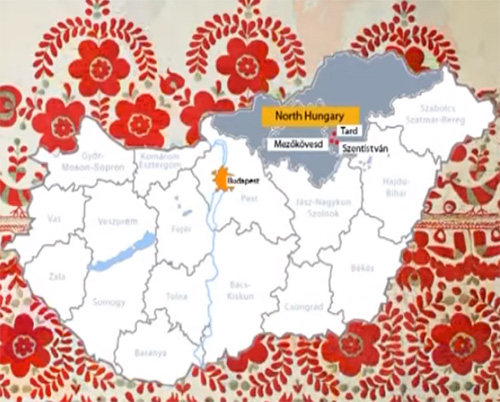
Matyó folk art is well-known nationally and is recognized as a symbol of Hungarian folk culture internationally. The rise to fame of the characteristic Matyó folk-art stems from the process of establishing a national culture that took place in Hungary at the turn of the 19th-20th century, similar to the process that transpired in England and Scandinavia. This formulation of a national culture drew on peasant traditions for these, still living elements of traditional culture, were viewed as remnants of a common archaic national heritage. At the time, the Matyó people became one of the representative groups of Hungarian folk heritage. Through their colorfully rich embroidery and it's integral role in their traditional costumes, Matyó folk art became one of the representative symbols of Hungarianness and of the emerging national identity and self-image.
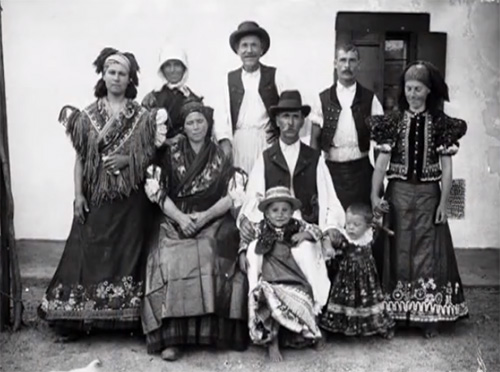
The basis of Matyó societal structure is the extended family or clan arrangement. Related clans live together occupying entire blocks or neighborhoods of the city. The clans of these neighborhoods were also closely linked economically, cooperating and helping each other with work on the farms. The arrangement of these societies was also distinct from other areas of the city, with their winding narrow streets and alleys, tiny yards, and characteristic hip-roofed small houses.
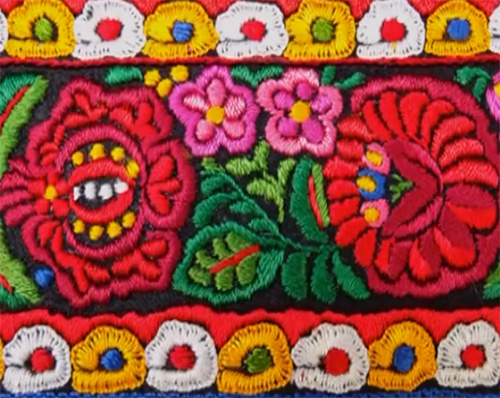
The traditional neighborhood arrangements of old can still be seen in Mezőkövesd. Thanks to town leaders, a sizable area has been protectively zoned for preservation. Demolition of old peasant buildings in this area is prohibited and their restoration in the traditional style is required. This quarter of town has become the primary scene of safeguarding Matyó cultural heritage. These buildings are home to a variety of currently operating and productive folk art and traditional crafts workshops. The masters and artists often live in the traditional houses on the premises. Ornamental furniture painting, honey gingerbread making, and pottery are but a few of the many traditional workshops operating in the area.
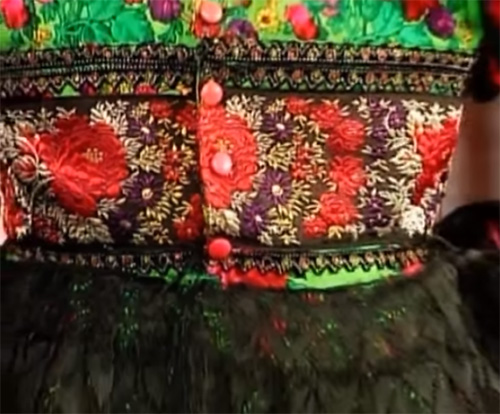
The locally operating Association for the preservation of Matyó traditional heritage is also based in a similar Matyó neighborhood, actively saving ever more buildings from demolition and utilizing them as community spaces and exhibition venues.

Originally used to decorate textiles by the late 19th and early 20th centuries, Matyó embroidery patterns not only represented Matyó people and their unique culture but symbolized Hungarian national culture as a whole throughout the world and in domestic tourism. By the 1960s, the local Mezőkövesd chapter of the nationally operating network of folk art handcraft cooperatives had compiled an unparalleled comprehensive documentation of the historical development of embroidery patterns, including a collection of motifs based on the artifacts of Matyó textile embroidery on display in museums. With the dissipation of the embroidery cooperatives, the Matyó folk art documentation archive was purchased by the town of Mezőkövesd and entrusted to the local Matyó Folk Art Association for publication.
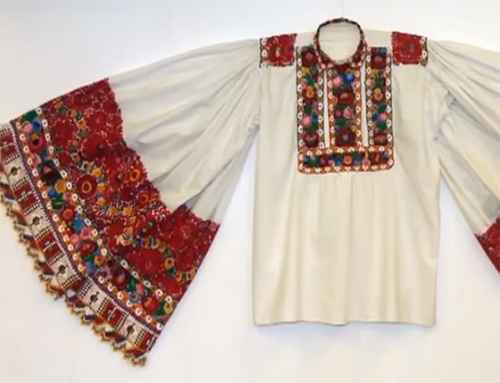
The first drawing women of Mezőkövesd, women who drew the patterns to be embroidered on fabrics, date back to the late 1800s when talented drawers began to develop their own unique style. Some of these women were from furrier families and abandoned the more archaic embroidery patterns, supplanting with them with their own and utilizing stitch types and techniques used on fur clothing. One of the most well-known drawing women of Mezőkövesd was Bori Kis Jankó. She learned the art of pattern drawing and embroidery as part of the family tradition. In 1953, she was among the first in the country to receive the National Master and Folk Art award – this is comparable to the UNESCO “Living Human Treasures” title. The ever-growing list of awardees is now an element on the Hungarian national inventory of intangible cultural heritage.
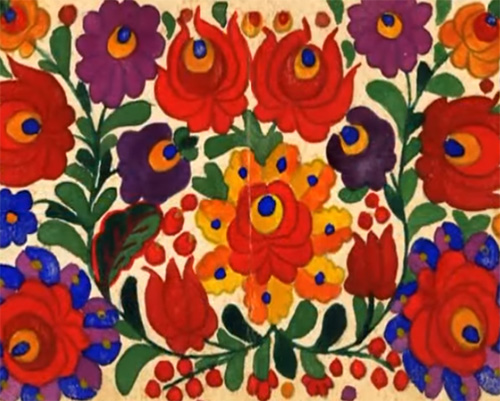
The upswing in the number of tourists visiting the town produced an increased interest in and subsequent revival of other branches of local folk art and traditional crafts. Such crafts include ornamental furniture painting, pottery, honey gingerbread making, and doll making. The work of folk artists in Mezőkövesd is supported by the Matyó Folk Art Association. Established in 1991, the Association was the first NGO in the town to promote culture. Programs and events organized by the Association are based in the Matyó quarter and, for instance, the House of folk artists and in the newly built Dance barn – reminiscent of the local traditional custom and now functioning as a community center. The association boasts over 100 members.
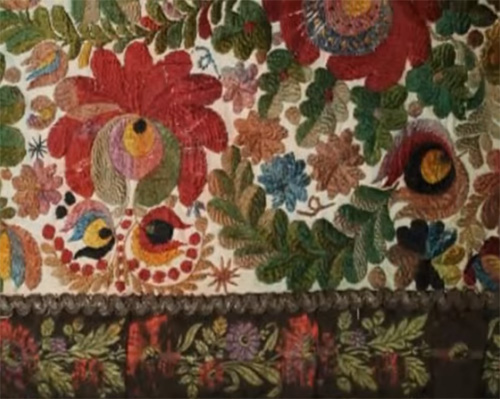
The Borsóka Embroidery Circle, established in 2002, also operates under the wings of the Association and aims to safeguard and promote the art of Matyó embroidery in Mezőkövesd. Apart from mastering and transmitting the numerous stitching techniques and traditional patterns of old, they also place great emphasis on creating new, modern, applications of the tradition, thereby safeguarding and ensuring the viability of the century-old tradition for years to come.
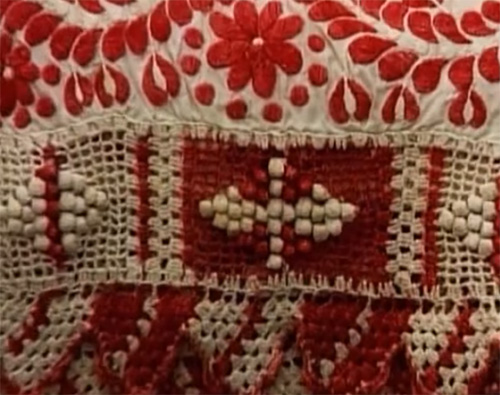
The Association also supports the Matyó folk dance ensemble and facilitates the work of other amateur folk dance groups, thereby greatly contributing to the sustainment of the local folk dance heritage and its transmission to younger generations.
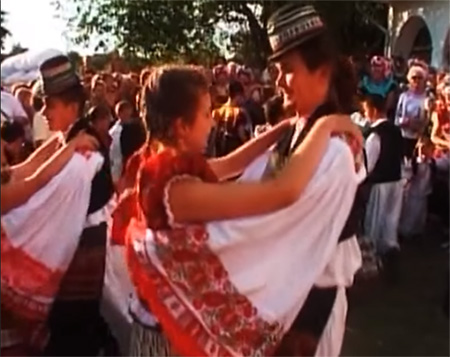
The Matyó folk art Association also actively participates in implementing primarily folk art events, such as festivals, folk dance shows and parties, folk music concerts, exhibits, playhouses, and art camps. The “100 roses” embroidery competition, held every three years, has become a national event with selected works put on display at the Matyó Museum.

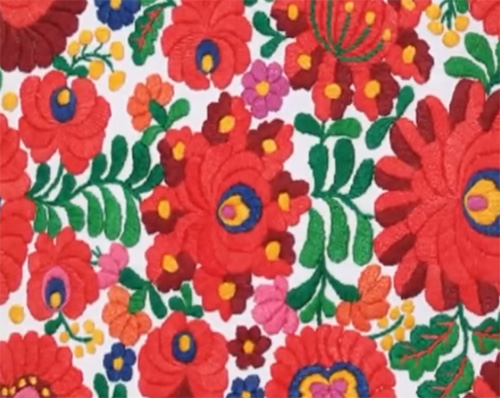
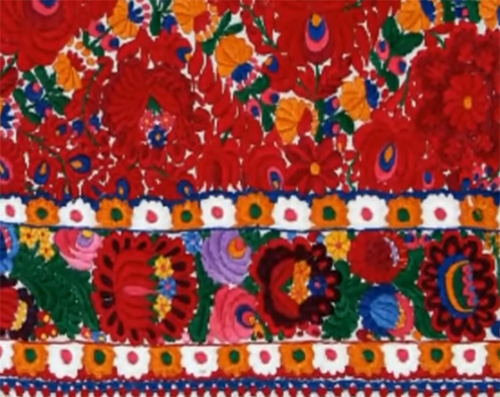
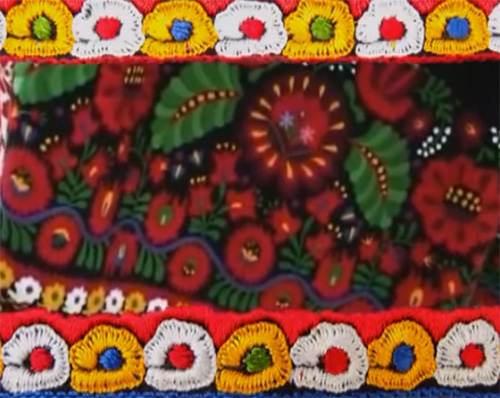
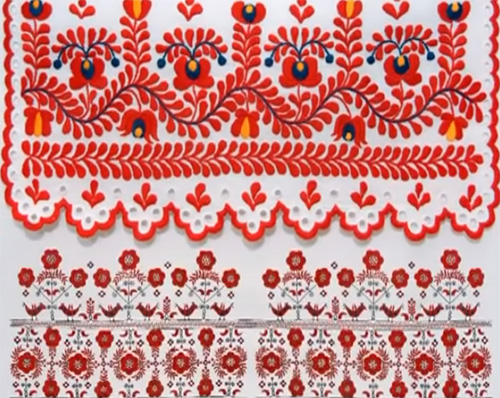
(c)


